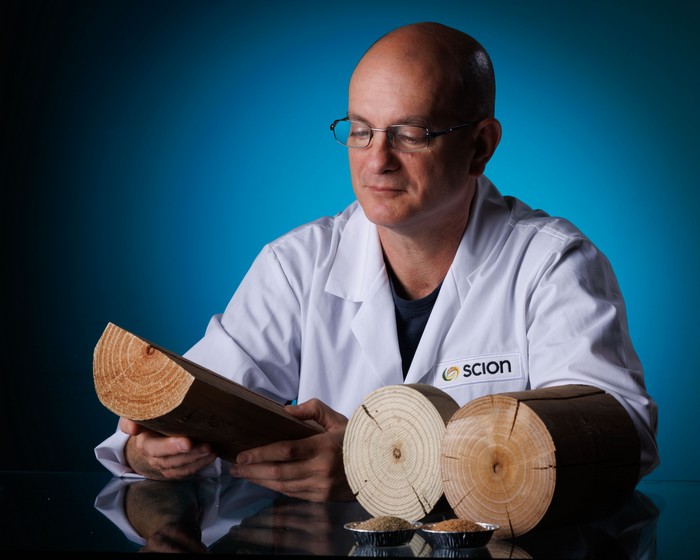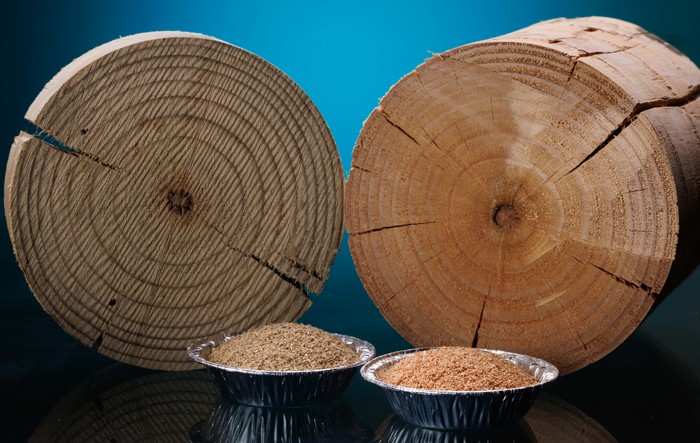Solution to widespread problem vital
Scientists believe there could be a future for CCA timber at the end of its useful life.
Every year, thousands of tonnes of CCA-treated timber are sent to secure landfills.
There are currently limited disposal options for the timber, which has been treated with a mix of copper, chromium and arsenic.

One of the most widely used wood preservatives worldwide, chromated copper arsenate (CCA) enhances the durability of wood, meaning timber products are more resilient to decay and insect attack.
It is commonly used in construction, landscape gardening and horticulture with hundreds of CCA-treated posts per hectare in vineyards.
But at the end of its life the wood has limited reuse value and, due to environmental challenges with the treatment components like arsenic, limited disposal options.
Incineration or pyrolysis is technically challenging. Most of it goes to secure landfills. Exactly how much is sent to landfill is hard to quantify because CCA makes up a portion of demolition waste which is often unsorted. A 2021 Ministry for the Environment report showed almost three million tonnes of class 2 to 5 waste is sent to landfill each year. Construction and demolition waste could be in classes 2-4 and contain CCA timber.
Scientists at Scion have been researching removing CCA from treated timber at the end of its life and separating it into individual elements.
Senior technologist Sean Taylor discovered there could be a way to remove CCA from the timber in 2015 and began research to find an efficient removal process.
By 2017 he had figured out how to remove it from up to about 350 kilograms of hogged (shredded) timber at a time, achieving 95% removal at both bench and pilot scale.
The early successes led to a $163,000 Waste Minimisation Fund grant to continue investigating the feasibility of remediating treated timber.
Taylor has made good progress removing CCA and recovering the copper and arsenic, but more work needs to be done recovering individual elements – particularly isolating a high enough percentage of chromium.
“The issue became how can we get the metal components out and how can we isolate them individually?” Taylor says.
While a future use for the remediated timber and recovered elements would need to be determined by users, once successfully isolated, the elements could then be reused in things like electronics or compound metals, keeping them in the circular bioeconomy.
“If you’re just taking it out of the timber and putting it into a bucket, you’re just moving the problem around.”

Funding the solution
Taylor says a solution to CCA timber is vital because putting it in the landfill or worse, burning it without suitable technology and infrastructure, is “not the wise or right thing to do long term”.
Taylor, and Distributed and Circular Manufacturing portfolio leader, Marc Gaugler, hope by showing industry that CCA removal is possible there will be interest in funding the solution to the problem.
Gaugler says we need to find solutions that align with circular bioeconomy goals, make the most of resources and recover materials.
“Because it’s CCA-treated it’s not going to degrade in many, many decades – that is why we make it. However, it’s an organic material going into landfill,” he says.
“Scion’s Circular Manufacturing programme aims to show wood materials can go into circularity beyond burning … We can use new technology to solve hard and old challenges.”
Gaugler says Scion has shown there are end-of-use options for CCA-treated timber, but it needs to happen on a large scale. The question is who pays for resource recovery and waste management addressing the issue and adding value by eliminating a problem.
If you’re just taking it out of the timber and putting it into a bucket, you’re just moving the problem around. - Sean Taylor
Taylor and Gaugler suggest selling recovered timber and chemicals could be a way to offset processing costs, and mobile technology would avoid the need to ship waste timber for processing.
Around the world, other countries have already stopped or restricted the use of CCA or established viable disposal options.
Ministry for the Environment’s Waste and Resource Efficiency director Shaun Lewis says the ministry is focused on initiatives that enable the Emissions Reduction Plan 2023-2025 actions and the current Waste Strategy. For end-of-life wood products, this centres on reducing and diverting construction and demolition waste from landfill towards more beneficial uses.
“The ministry is collaborating across government and with industry on reducing construction waste, recovering resources, and exploring more circular options for construction materials.
“There is a particular focus on treated and non-treated timber and addressing the challenge of separating these processed wood products at the end of their life to enable more circular end-of-life options from a waste hierarchy lens.”
He says Scion’s work, supported by the Waste Minimisation Fund, helped address some of these challenges.
For more information contact Marc Gaugler
